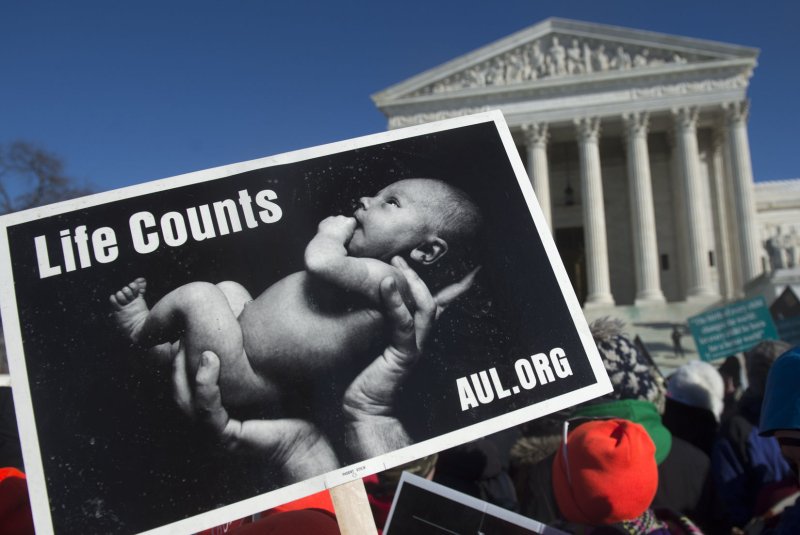Anti-abortion protesters take part in March for Life on Capitol Hill in Washington, D.C., January 22, 2014. The march marked the 41st anniversary of the 1973 Supreme Court decision in the famed "Roe v. Wade" case that affirmed a woman's right to an abortion. UPI/Kevin Dietsch |
License Photo
WASHINGTON, June 26 (UPI) -- A Massachusetts law establishing a 35-foot buffer zone around abortion clinics violates the free speech rights of protesters, the U.S. Supreme Court ruled Wednesday.
In his opinion, Chief Justice John Roberts said that the law, adopted in 2007, was too broad.
"The buffer zones burden substantially more speech than necessary to achieve the Commonwealth's asserted interests," Roberts said.
Massachusetts began looking for ways to protect abortion clinics after receptionists at two Planned Parenthood clinics in Brookline, Mass., were killed on Dec. 30, 1994, by John Salvi, a young man who later died in prison in an apparent suicide.
Four justices joined Roberts in his opinion. Justices Samuel Alito and Antonin Scalia filed concurring opinions, with Anthony Kennedy and Clarence Thomas joining Scalia.
Roberts said that Massachusetts in McCullen v. Coakley showed only that the buffer is easier for police, not that doing away with it would make their job of protecting clinics impossible. He also found there had been no arrests or prosecutions for protests outside clinics since the 1990s.
"To meet the narrow tailoring requirement, however, the government must demonstrate that alternative measures that burden substantially less speech would fail to achieve the government's interests, not simply that the chosen route is easier," he wrote.
Massachusetts adopted the 35-foot buffer zone after officials decided a law similar to a Colorado one that was approved by the Supreme Court in 2000 was impractical. That law set up 8-foot "floating bubbles" around patients, with protesters within 100 feet of clinics required to keep their distance unless the women consented to talk to them.















